St Petersburg is city is a place full of culture and history. It is home to a number of world-class museums including a buzzing arts and shopping scene. Also, the city never sleeps and is always buzzing at night. Let’s check out the sights and sounds of what makes the city one of the best Russian cities for arts, history, affordable food and shopping.

A city which never sleeps
Having come from Moscow city on my Russian adventures, I found St Peterburg’s more cosmopolitan than the administrative capital of Russia. Also, in contrast to Moscow, St Peterburg’s is a city which never sleeps.

Moreover, surprised I was, that you can find a large number of stores and eateries open throughout the night. Food is available via 24 hour outlets, especially along the busy Nevsky Avenue district. The city is buzzing at night.

However notably, most eateries do have reduced staffing and evening menus with fewer varieties. Still, it is a great welcome especially if you are looking for a place to eat last dark after a long day of sightseeing.
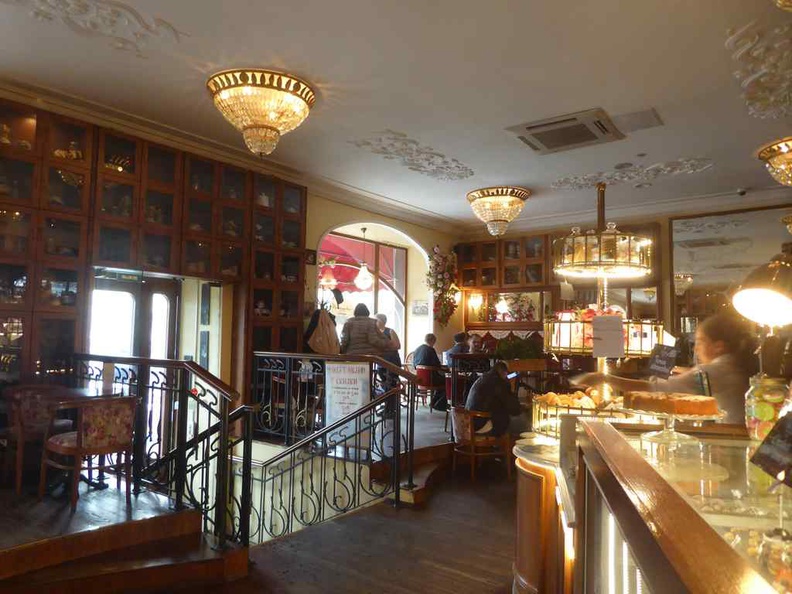
Affordable dining
Moreover, the city is known to offer really affordable dining, even in the heart of the city. Also, interestingly, food typically offered the more popular cafeteria-style food court setting. This is on top of the regular in Cafés and restaurant style food places. Additionally, food is very reasonably priced too. In-fact, food and shopping is much cheaper than Moscow, by about 20-30% on average, where you can stretch your dollar more.

Moreover, the demographics is a notably larger younger generations here as compared to Moscow. There are also more youth orientated attractions and parks, like skate parks and social pubs. Also, notably, the city is more laid back than the authoritative state of Moscow. You see more people chilling and busking on the streets in the evenings. Something glaringly absent in Moscow.
Furthermore, getting around the city is quite a breeze. Besides having an excellent public transport system, which on the contrary, does not operate 24 hours a day, Saint Petersburg is also surprisingly very walkable. You can explore various attractions with just a simple self-guided walking tour.
Getting around with the City Metro
Like Moscow city, St Petersburg is a city very well served and connected by its underground Metro city system. Moreover, St Petersburg subway is a gem of itself too. It is one of the busiest in the world serving 2.5 million passengers a day.

This underground transport network comprises of a network of intricate lines spanning out from five subway lines, serving 67 stations through over 3000 trains. Travel is via a contact-less pre-paid card or single trips via a token system.
Metro musings
Also, if you wish to take home a small souvenir of Russian public transport, you could consider using their traditional metro tokens. It is a coin with a “V” symbol inscribed on it.

Moreover, you can obtain them from old token machines at 55 rubles each. Also, they are usually place in a line at station entrances. You pop them in the coin slot at the turnstiles or use your contact less card to enter.

Furthermore, fares are charged on a per-trip basis regardless of distance traveled. Also, the city transport system also employs surface-level trams as well as buses, though not all of them accept the card. The metro trains are similar to the ones we experienced in Moscow. It has very solid doors which close with a solid thunk. The trains look well-built like a Russian armored vehicle.
The metro of Saint Petersburg first opened in 1955 and runs like clockwork even till today. I noticed that trains and we are talking about trains which had been running for in the span for half a century, achieving train intervals of under 30 seconds per train on peak periods. Impressive! Notably, each underground subway also doubles up as an aerial shelter.

Also, their escalators go down rather deeply underground. The stations are very intricately decorated with cold war architecture. It brings life into an otherwise bland underground environment.
A shopping paradise
Nevsky Avenue is the go-to place for shopping here at St. Petersburg. It is a long shopping avenue lined with high street stores, eateries, restaurants and malls.

A recommended travel tip here is to start your journey from Ploschad’ Vosstaniya metro station. The landmark here at Vosstaniya is the Leningrad Hero City Obelisk, there are several 24 hour eating outlets along this stretch as well as major malls.
Galeria Shopping Mall
Furthermore, a major mall here in at Vosstaniya in the city is Galeria Shopping Mall. Located at Ligovsky Ave, it is a humongous shopping mall spanning 5 floors and home to hundreds of stores retailing contemporary international brands, eateries. Notably there is a rather popular mall with the locals.
There is even an American muscle car exhibition at the mall atrium on my visit, much to the delight of shoppers. Russians do adore American culture, you can also see it in the number of American fast food outlets all over the mall and city too.
Speaking of American, St Peterburg is also home to Russia’s other Hardrock café (the other branch being Moscow). It is located at the Nevsky Prospekt district just off Tsentralny.
Vosstaniya Shopping street
Moreover, going back to the topic of Vosstaniya, the shopping street is best enjoyed walking on-foot. Notably, Vosstaniya is also a location to get affordable accommodation during your stay in the city. You can head west-bound along Nevsky Avenue towards Admiralteyskaya Metro station.

Despite the walk being about 3km away, it is loaded with attractions, shops and restaurants which takes the pain away. Also, Admiralteyskaya is located on the other end of the street where the State Hermitage museum resides.
Moreover, evenings and late nights in downtown St Peterburg is all business as usual. Restaurants and eateries remain open 24 hours a day, almost all day long. Other shopping destinations along Nevsky Avenue includes Gostinyy Mall.

It sits above Gostinyy metro station. It is a fashion city center shopping mall home to luxury retailers, cafes and even a wax museum. Across the street is where the Russian Museum and the Cathedral Savior on the Spilled Blood reside. You can read up more on my visit of the Russian Museum here.
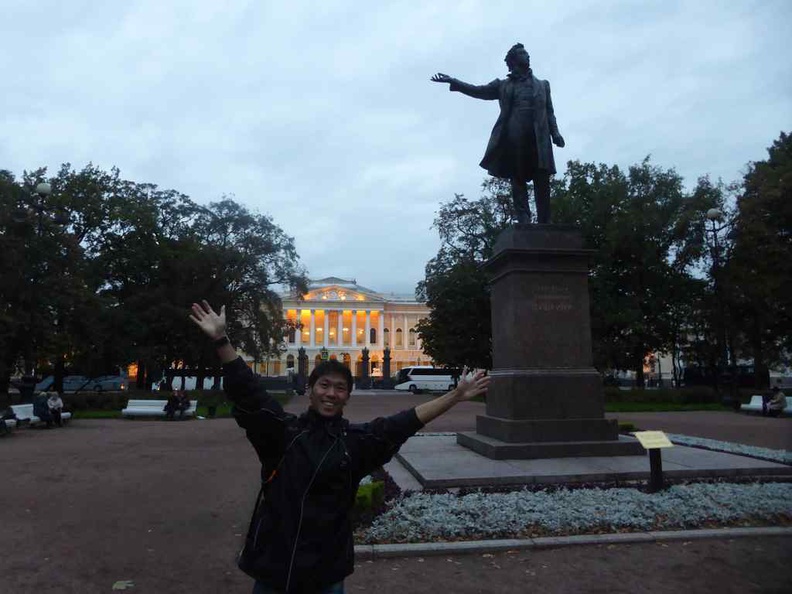
State Hermitage and Alexander Column
The streets of St Petersburg are loaded with history at every block. The main attraction and post card showboy of the city is the State Hermitage Museum. It sits in front of a large open square called the Palace Square, also known as “Dvortsovaya Ploshchad” in Russian.

Going straight along Nevsky Avenue brings your right to the St Petersburg Palace Square. St. Petersburg’s central square. The area was used as a military form up point and parades. It provides several good photo opportunities too.
Moreover, standing centered in the square is the Alexander Column. It is known in Russian as Aleksandrovskaya Kolonna (Александровская колонна). The iconic monolith is a tall obelisk-looking stone and concrete structure sitting right in the middle of the Palace Square. It commemorates Russia’s victory over Napoleon’s France.

Furthermore, this large square sits between a grand archway and is the front open court yard of the State Hermitage Museum itself. Here, you can see flocks of tourists as well as buskers and performers working for a tip.
St Issac’s Cathedral
Moreover, just a block off the Palace grounds is the St Issac’s Cathedral. You can recognize by it large orthodox style dome. The cathedral at St Isaac’s Square was ordered by Tsar Alexander and was originally built as a cathedral. However, from 1931 with the Soviet government rise of non-religious views turned it into a museum, which remained as it is till today.

Here, you can also find the Admiralteystvo, a historical building of the Russian Navy here too, with its massive front fountain and park. Just behind the State Hermitage Museum is the City’s main Neva river. You reach the embankment after going through a couple of shady and lush parks decorated with several stone statues.

Mariinsky Palace
Mariinsky Palace is an administrative building. It is located just beside the Saint Isaac’s Cathedral, across the Blue Bridge from South lawn of Saint Isaac’s Square, where Cathedral sits. Also, built between 1839 and 1844, the palace is the last of the neoclassical Imperial residence to be constructed in city.

The palace was designed by the court architect Andrei Stackenschneider. Notably, since 1994, the building has been the site of the Legislative Assembly of Saint Petersburg. Adjacent to the palace is the Russian Institute of Art History. It is distinguishable by a pair of stone sculptures by the entrance.
Monuments and history at every corner
Moreover, the good news is that a large number of St Petersburg historical monuments can be found along Nevsky Avenue. Hence, this long shopping district has pretty much all your sightseeing and shopping needs. It makes it ideal for you to blend in shopping together with history. Landmarks such as the St. Isaac’s Cathedral and State Hermitage Museum are all within walking distance from this street.

Church of the Savior on Spilled Blood
Moreover, one main attraction sights to check out in St Petersburg is the Church of the Savior on Spilled Blood. It is an orthodox Church located on a scenic canal side. There are also lines of tourist gift shop along the canal leading up to the monument. Entry into the attraction incurs a fee.

Furthermore, construction of the Cathedral Savior on the Spilled Blood at an estimated cost of 4.5 million rubles began on 1883. It has a distinct look almost like that of the Saint Basil’s Cathedral in Moscow.
Also, this was during the reign of Alexander III. The church was dedicated to be a memorial to his father Alexander II, two years after his father’s assassination.

Furthermore, the construction was completed in 1907, during the reign of Nicholas II. Today, you can visit the Cathedral for a fee. It is closed on Wednesdays.
Kazan Cathedral
Also along the Nevsky Avenue is the Kazan Cathedral. Also known as the mother cathedral, you can recognize it along the shopping district for front grand archway courtyard. Moreover, this elegant church was made into a museum during Communist times, and is open for public visitation.
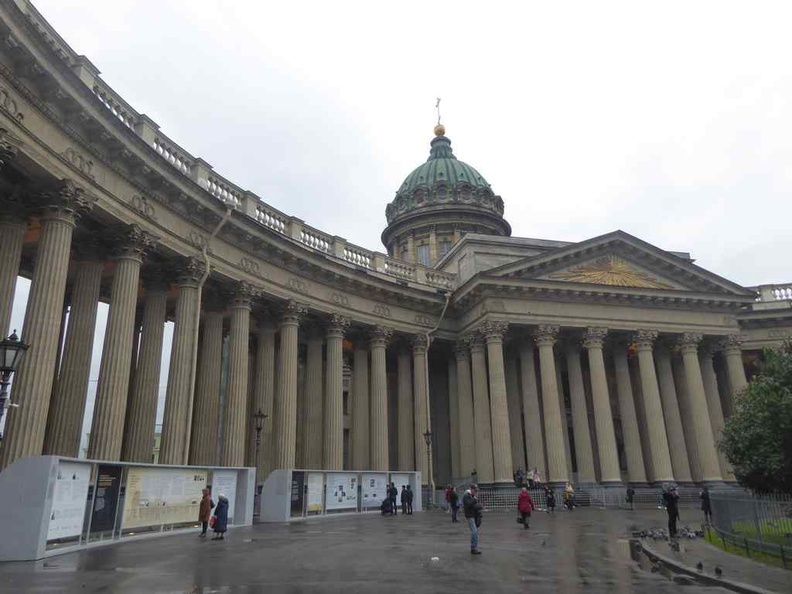
The Construction of the cathedral started in 1801 and took 10 years to complete in 1811. It is based of an Empire architecture style with a large sweeping columns on its exterior. It was designed by architect Andrey Voronikhin. Interestingly, the Kazan Cathedral design philosophy is said to be the source of inspiration of the Helsinki Cathedral’s neoclassical style.
Some minor points of interest include the Yusupov Palace near the State Hermitage, as well as the Alexandrinsky Theatre. In front of the theatre is an open public park with the Monument to Catherine II (Памятник Екатерине II).

Sitting center of the park is a statue of Catherine the Great (Circa-1873). Also the park is surrounded by prominent figures during her reign. This park is notably it is beside the National Library of Russia. Founded 1795, it is the country’s oldest public & national library, and houses Voltaire’s book collection.
Coastal museums and Kolonna columns
Furthermore, St Petersburg is a coastal city, with a river running through the heart and administrative parts of the city. Along the river is also where you find several interesting sights. Notable landmarks along here includes the Rostral’naya Kolonna (Ростральная колонна) columns.
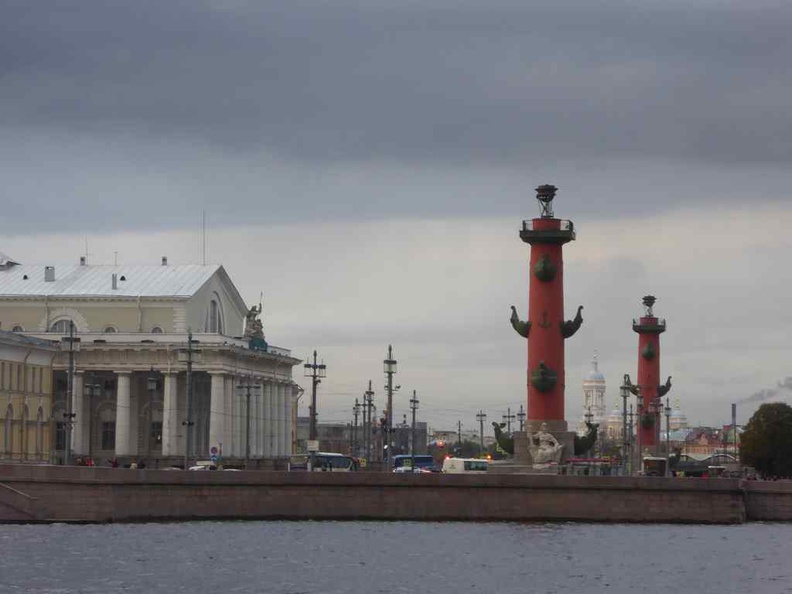
These 32 meter tall iconic columns are painted in red and green and are adorned with sculptures and ships’ prows topped with torches lit on holidays. Moreover, they are instantly recognizable icons of the St Petersburg. It is also a poster boy for postcards in gift shops throughout the city.
Also, the columns sit on a small island connected via a lion’s gateway bridge just behind the embankment where the Winter palace of the State Hermitage Museum reside. Also on this island are a couple of museums.

Additionally, on top of a few commercially-run naval ships docked by the bay side, museum establishments includes the Zoological Museum of the Zoological Institute of the Russian Academy of Sciences, as well as the Museum of anthropology and ethnography. It houses archaeological Russian and international collections.
Moreover, the river brings about sights. From the Kolonna columns, a walk further north along Mythinskaya Naberezhnaya road brings you to a few commercial sights, such as a colonial-looking era sail ship. Interestingly, it is not a historical site, but rather is home to a couple of restaurants, cafes as well as a fitness gym.
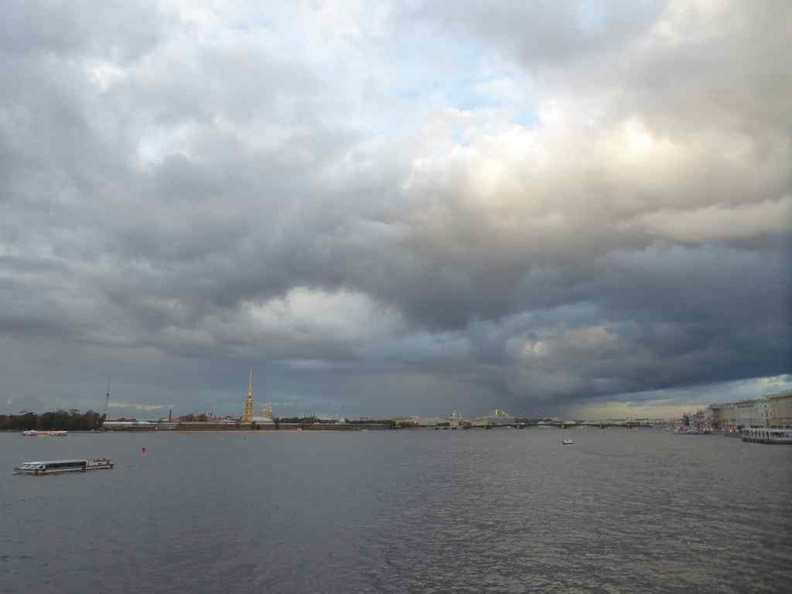
Views of the Neva River
From the bridges and the seaside walks, you can catch great views of the Neva River from the north, bank. Additionally, notable landmarks visible from here include the State Hermitage Museum buildings, as well as the palace bridge linking up to the Paul Fortress.
Paul Fortress along the Neva river
Furthermore, adjacent to this island across the Neva River is the Peter and Paul Fortress. Also, the fortress was founded by Peter the Great, and used to be a fortified island housing a small town complete with and early city and a cathedral.

The small island fortress is accessible via permanent wood and steel bridges and situated by is a walkable distance from the State Hermitage. Today, the island is open all day long, with the fortress fortification containing a museum housing a couple of cannons and a tower which once defended the Fortress.

History of the Fortress
Moreover, the fortress was established by Peter the Great on 1703. The defensive walls of the island is indicative that it was built at the height of the Northern War. Additionally, this was to protect the projected Russian capital from a feared Swedish counterattack.
However, the fort never fulfilled its martial purpose it was initially built for. Notably, in 1720, the fortress served both as a city garrison and a prison for high-ranking or political prisoners. Notable ones include prisoners Shneur Zalman of Liadi and Tsarevich Alexei Petrovich.
Also, the fortification was subsequently attacked during the Russian Revolution by the Bolshevik, who took momentarily took over the island. The island was also damaged in by the Luftwaffe siege during World War II. Since, then the island had been restored post-war looks and is a prime tourist attraction till today.
Today, the fortress is open all day long and is easily accessible via pedestrian and vehicles bridges linking in. The fort has only a couple of entrances, with only one allowing for vehicles. A couple of exit points leads you out to sea-ward facing jetties allowing you to have a view of the surround beachline surrounding the island fort.

A UNESCO heritage site
Notably, given it’s historical significance in Russian history, the fortress island is a UNESCO heritage site. Additionally, you can find the UNESCO board on the exterior west-facing park on the fortress island, beyond the fortification walls.

Also, wrapping up the museums on this stretch adjacent to Paul’s Fortress is the Military-Historical Museum of Artillery, Engineer and Signal Corps. You can recognize it by the number of open military static displays outside the establishment. Lastly, one of the few “living museums” along the Bolshaya Nevka River is the Cruiser Aurora.

The Aurora is a cruiser which served during the Russo-Japanese War, revolution of 1917 and WWII. Today, the ship had been converted to a floating museum. It tells it’s history through it’s repurposed interior galleries.
Museums to check out
Additionally, St Petersburg is home to a large number of museums, this range from Military, Zoo to Automotive museums. But some deserves special mention, one being the city’s State Hermitage museum. The Hermitage is synonymous to the Louve museum in Paris. Historically, the museum was founded on 1764. Also it comprises of several smaller buildings in the neighbourhood sitting near the Palace Embankment by the Neva river.

Furthermore, the museum was conceived primarily for Empress Catherine the Great to house her impressive collection of paintings. Also, the collections were obtained from Berlin merchant Johann Ernst Gotzkowsky. Physically, the museum sits in front of the Alexander Column and square.
The State Hermitage
Also, the Hermitage comprises of six buildings, firstly with the main museum complex. The remainder five buildings are scattered throughout the immediate compound. These are namely the Winter Palace, Small Hermitage, Old Hermitage (also called “Large Hermitage”), New Hermitage, and Hermitage Theatre. Also, these buildings also serves as the former main residence of the Russian tsars. Today it houses the museum collection comprising of choices of Egyptian antiquities, Classical antiquities, Prehistoric art, Jewelry and decorative art, Italian and Spanish fine art, French Neoclassical and Russian art.

Moreover, near the State Hermitage winter palace is the boat ferry point. This is where you can purchase and ride on the hydrofoil boats bringing you to Peterhof Grand Palace out of the city. It is stated to be the Versailles of Russia. Also, here you can find the The Bronze Horseman sculpture.

Additionally, it stands on Senatskaia Ploshchad Square, and facing the Neva River, surrounded by the Admiralty and the St Isaac’s Cathedral. Notably, the impressive Horseman monument was built by order of the Empress Catherine the Great. It was a tribute to her famous predecessor on the Russian throne, and founder of St Petersburg, Peter the Great.

Wrapping it up
All in all, St Petersburg is a city buzzing with life, entertainment and historical culture. In total, you do need about 4-5 days to see the city proper, considering some attractions like Peterhof Palace and the Hermitage Museum Galleries can take up to a full day. Whether you are in for the culture, history or plain shopping. The city should definitely be on your shortlist in Russia.
View more photos of St Petersburg city in its gallery here.








































































